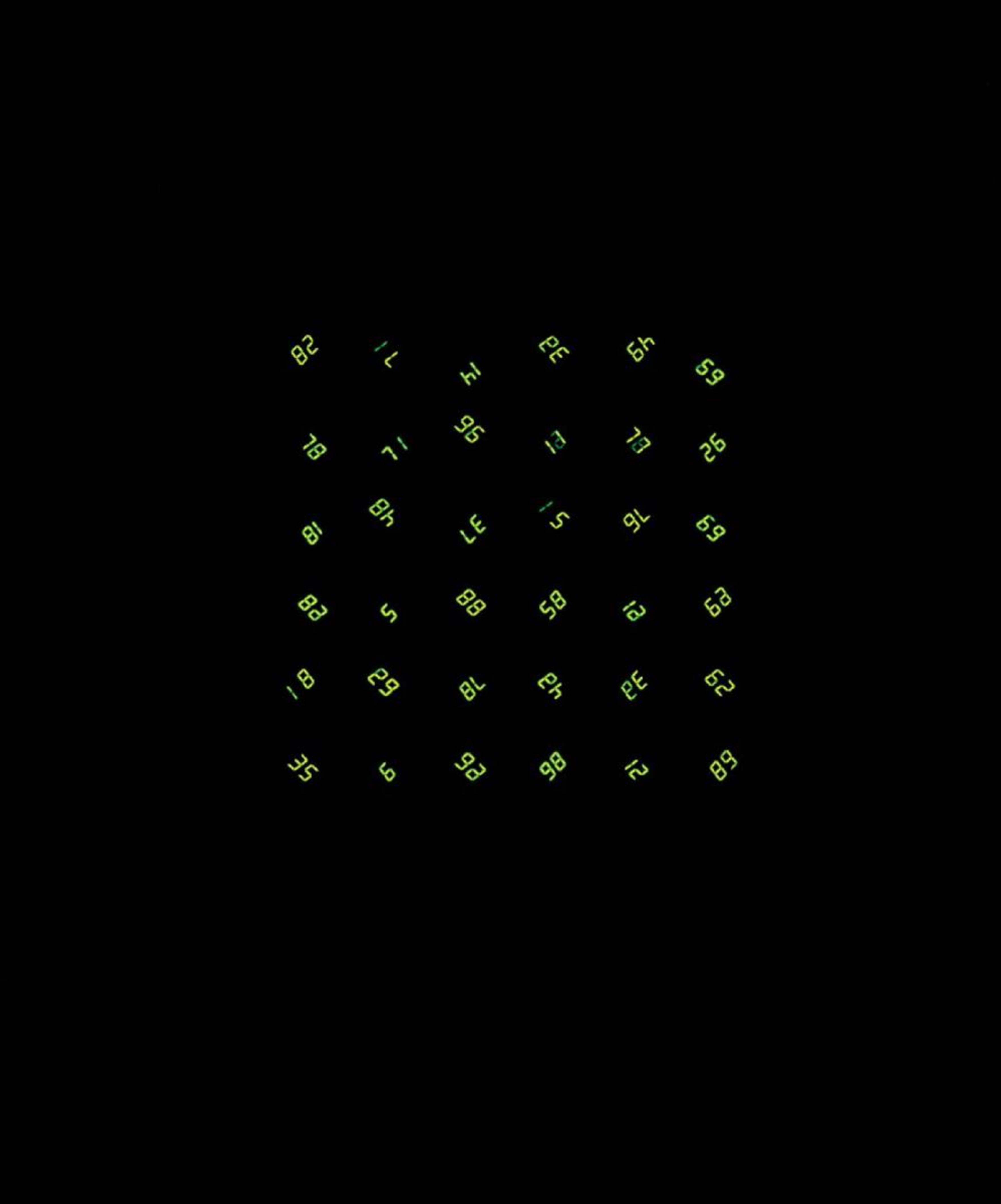Tatsuo Miyajima
Model (36) No 11 - grün
1993
L.E.D., IC, Aluminium, Kabel und Trafo. 46 x 46 x 26,5 cm.
"Miyajima applies three basic (operative) concepts to his body of work: first, to keep changing; second, to connect with everything; third, to continue forever. The medium that links these three is the LED (Light Emitting Diode). (Kim Sun Jung, Tatsuo Miyajima, in: Ausst.Kat. Tatsuo Miyajima, Count of life, Artsonje Museum und Artsonje Center, Gyeongju, 2002, S. 72).
"Miyajima hat immer mit technischen Mitteln gearbeitet und war von diesen fasziniert; er entwirft 1988 sein erstes "Gadget": einen digitalen Zähler (LED) auf einer Platine, von einer integrierten Schaltung gesteuert. Das "Gadget" ist der Grundbestandteil für die Arbeiten, die er seitdem hergestellt hat. Für Miyajima sind die "Gadgets" was das Idiom für einen Schriftsteller ist. Ohne eine "Null" zu zeigen, erscheinen auf jedem "Gadget" ununterbrochen alle Zahlen von 1 bis 99, während die Geschwindigkeit, mit der es sich ereignet entweder verzögert oder erhöht werden kann. Manche Gadgets sind unsichtbar miteinander verbunden. wenn zum Beispiel ein "Gadget" anfängt zu zählen und die Zahl 99 erreicht, kann es ein zweites "Gadget" in Bewegung setzen: was durch ein Signal ausgelöst wird, das der erste Zähler aussendet. Das empfangenen "Gadget" zählt darauf auch wieder bis 99." (Jos Poodt, Miyajimas Metaphern, in: Ausst.Kat. Tatsuo Miyajima, Museum Het Kruithuis, 's-Hertogenbosch und daadgalerie, Berlin, Berlin 1991, S. 62 [Der Text basiert auf einem 1991 geführten Interview mit dem Künstler]).
"Miyajima's work is known for its changing, flickering numbers. And his work, his numbers change at different speeds, just as people change at different rates. One may say thus that Miyajima's work represents life in general. Time flows differently for each person - depending on how it is used, and on the frame of mind - and this fact is represented as numbers changing from 9 to 1, or from 1 to 9. In Miyajima's numerical universe, there's no 0. That does not mean that "0" doesn't exist for Miyajima, but that the number symbolizes the moment of new beginning. [...] Miyajima expresses the utterly ordinary theme of "time" through the LED. In his thinking, there are three basic components - to continue to change, to connect with everything, and to keep changing - and the LED is the best medium to convey these notions. Due to the characteristic of the medium, in the beginning stage, red, and later green and blue have been used." (Kim Sun Jung, Tatsuo Miyajima, in: Ausst.Kat. Tatsuo Miyajima, Count of life, Artsonje Museum und Artsonje Center, Gyeongju, 2002, S.78).
Provenienz
Deutsche Privatsammlung¶
Ausstellung
Berlin 2000 (Haus am Waldsee) und Baden-Baden (Staatliche Kunsthalle), Was vom Traum blieb, Zeitgenössische Kunst aus Japan

